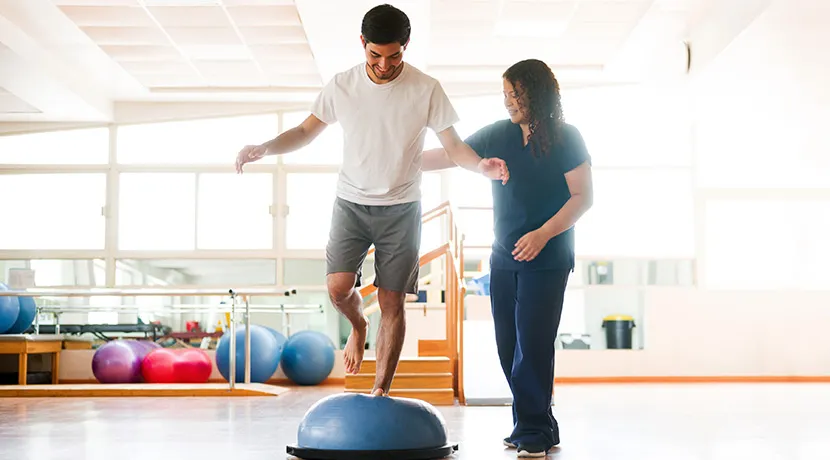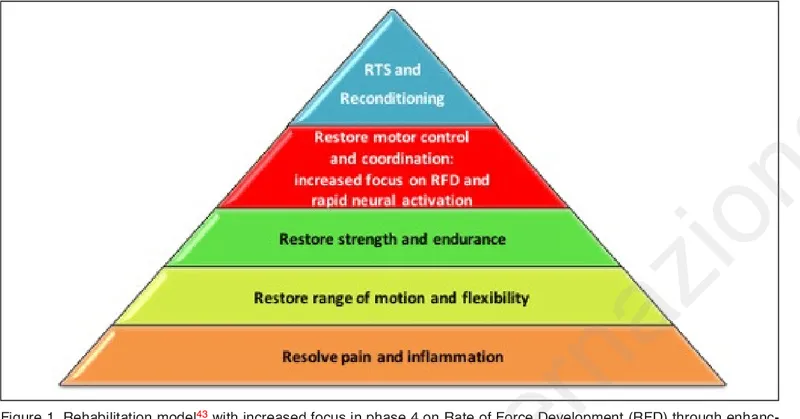
Are you ready to take charge of your injury rehabilitation journey? Whether you're recovering from a sports injury, a car accident, or a workplace mishap, the road to recovery can feel daunting. But fear not! In this comprehensive guide, we will explore the key components of successful injury rehabilitation, from understanding the rehabilitation process to choosing the right healthcare professional for your needs. We'll delve into the importance of creating a personalized rehabilitation plan, incorporating holistic approaches and utilizing technology to aid in your recovery. Plus, we'll discuss the vital role of nutrition and mental health support in the rehabilitation process. And that's not all - we'll also explore how to prevent future injuries and leverage community resources for support. With practical tips and expert advice, you'll learn how to measure success in your rehabilitation journey and celebrate every milestone along the way. So, get ready to embark on a transformative path to recovery and regain control of your health and well-being!

Injury rehabilitation encompasses the process of restoring a person's functional abilities after suffering from an injury. This could include physical injuries, such as fractures or muscle strains, as well as cognitive and emotional injuries resulting from trauma. Understanding the specific type and extent of the injury is crucial in determining the appropriate rehabilitation plan.
Professional guidance is essential during the rehabilitation process to ensure that individuals receive personalized care tailored to their unique needs. Physical therapists, occupational therapists, and other healthcare professionals play a critical role in guiding patients through exercises, therapies, and interventions aimed at promoting recovery and restoring functionality.
The rehabilitation process typically involves various stages, starting with initial assessment and diagnosis followed by setting goals for recovery. This may involve targeted exercises to improve strength and flexibility, as well as techniques to manage pain and prevent further injury. Patients are closely monitored throughout the process to track progress and make any necessary adjustments.
When seeking a healthcare professional for injury rehabilitation, it's important to look for certain qualities that can contribute to your successful recovery. One key factor is their experience and expertise in treating your specific type of injury. Additionally, consider their communication style and how well they listen to and address your concerns.
There are various healthcare options available for injury rehabilitation, including physical therapists, chiropractors, sports medicine doctors, and orthopedic surgeons. Each may offer different treatment approaches, so it's essential to find the best fit for your needs. Take into account factors such as location, cost, and availability when choosing a healthcare professional.
Ultimately, finding the right healthcare professional for your injury rehabilitation involves research and possibly consultations with multiple providers. Don't hesitate to ask questions about their approach to treatment and success rates with patients who have similar injuries. By taking the time to select the most suitable professional for your recovery journey, you can set yourself up for a smoother path towards successful rehabilitation.
The first step in creating a personalized rehabilitation plan is the assessment and evaluation process. This involves thoroughly understanding the nature and extent of the injury, as well as assessing any existing physical limitations or conditions. By gathering this comprehensive information, healthcare providers can tailor a plan that meets the specific needs and goals of the individual.
Once the assessment is complete, a customized plan for rehabilitation is developed based on the unique requirements of each patient. This may involve setting realistic milestones for progress, outlining targeted exercises or therapies, and establishing a timeline for achieving recovery goals. The personalized approach ensures that every aspect of the rehabilitation plan is designed to maximize effectiveness and minimize any potential setbacks.
Incorporating holistic approaches into the rehabilitation plan is also an essential component. This may include integrating nutritional guidance, stress management techniques, mindfulness practices, and other complementary therapies to support overall well-being during injury recovery. By addressing not only physical but also mental and emotional aspects of healing, patients can experience more comprehensive and sustainable recovery outcomes.

The integration of technology has greatly enhanced injury rehabilitation. Advancements such as wearable devices, virtual reality, and robotic exoskeletons play a crucial role in expediting recovery and improving overall outcomes for individuals undergoing rehab.
These innovative tools provide opportunities for targeted exercises, real-time feedback on progress, and personalized treatment plans. For example, wearable sensors can track movement patterns and muscle activity to ensure proper form during workouts, while virtual reality systems can simulate various environments to help patients regain mobility and confidence.
Moreover, technology allows healthcare professionals to monitor and adjust therapy programs remotely, ensuring continuity of care even outside clinical settings. By leveraging these technological advancements, individuals can experience more efficient rehabilitation with greater support from their healthcare providers.
Nutrition plays a crucial role in the rehabilitation process after an injury. It provides the body with essential nutrients that support tissue repair, reduce inflammation, and boost the immune system. A well-balanced diet can significantly impact the speed and quality of recovery, making it an integral part of injury rehabilitation.
Some essential nutrients for faster recovery include protein, which aids in muscle repair and strength; Vitamin C, known for its role in collagen production; Omega-3 fatty acids, which help reduce inflammation; and Zinc, important for wound healing. Developing a nutrition plan tailored to individual needs is crucial for optimizing healing. Consulting with a healthcare professional or nutritionist can help create a personalized diet that addresses specific nutritional requirements during the recovery phase.
Incorporating nutrient-dense foods such as lean proteins, fruits and vegetables, whole grains, healthy fats, and adequate hydration can promote overall wellness while facilitating injury recovery. Additionally, avoiding processed foods high in sugar or unhealthy fats can prevent potential setbacks in the rehabilitation process.
Injury rehabilitation not only involves physical healing but also addresses the psychological impact of injuries. It is common for individuals to experience feelings of frustration, anxiety, and even depression during their recovery process. Therefore, mental health support plays a crucial role in ensuring a holistic approach to rehabilitation.
Therapeutic techniques such as cognitive-behavioural therapy (CBT), mindfulness practices, and stress management strategies are often incorporated into injury rehabilitation programs to promote mental well-being. These approaches aim to help individuals cope with the emotional challenges that may arise from their injuries and contribute to overall recovery.
Additionally, maintaining a positive mindset is essential in the journey of injury rehabilitation. Research has shown that optimism and resilience can have a significant impact on an individual's ability to recover from an injury. Therefore, providing support and resources for developing a positive outlook can greatly benefit those undergoing rehabilitation.
Education on injury prevention is crucial for individuals undergoing rehabilitation. By understanding the causes and risk factors of their injury, patients can learn how to avoid similar incidents in the future. This may involve learning proper techniques for activities, such as lifting heavy objects or participating in sports, as well as being aware of environmental hazards that could lead to injury.
Incorporating exercises for injury prevention is an essential component of post-rehabilitation care. Physical therapists often design specific exercise programs to strengthen muscles, improve flexibility, and enhance balance—all of which contribute to reducing the likelihood of future injuries. Patients are encouraged to continue these exercises even after completing formal rehabilitation sessions to maintain their physical abilities and prevent re-injury.
Maintaining a healthy lifestyle post-rehabilitation also plays a significant role in preventing future injuries. This includes eating a balanced diet, getting regular exercise, prioritizing mental well-being, and avoiding harmful habits such as smoking or excessive alcohol consumption. By taking active steps to care for their overall health and wellness, individuals can reduce their susceptibility to injuries and improve their long-term quality of life.
Support groups and networks can play a crucial role in an individual's journey towards rehabilitation. These communities provide emotional support, shared experiences, and practical advice to help individuals cope with the challenges of injury recovery. By connecting with others who have gone through similar experiences, individuals can gain valuable insights and motivation to stay committed to their rehabilitation goals.
Accessible resources for rehabilitation assistance are essential for individuals seeking to navigate the path to successful injury recovery. From physical therapy centres to community-based programs, these resources offer specialized care, guidance, and equipment necessary for effective rehabilitation. Individuals need to explore and take advantage of these resources tailored to their specific needs as they work towards regaining functionality and mobility.
Connecting with local healthcare providers and organisations is another vital aspect of injury rehabilitation. Building a strong network of medical professionals ensures access to comprehensive care plans that address both physical and psychological aspects of recovery. Additionally, collaborating with healthcare providers can lead to personalized treatment strategies that promote healing while minimizing the risk of re-injury.
Setting realistic goals for recovery is an essential component of successful injury rehabilitation. These goals should be specific, measurable, achievable, relevant, and time-bound (SMART). By establishing clear objectives, individuals undergoing rehabilitation can maintain motivation and focus on their progress.
Tracking progress and milestones throughout the rehabilitation process allows for a tangible representation of success. Whether it's increasing range of motion, reducing pain levels, or improving strength and flexibility, documenting these achievements provides encouragement and evidence of improvement.
Celebrating achievements in the rehabilitation journey is crucial for maintaining a positive outlook. By acknowledging each milestone reached—no matter how small—individuals can reinforce their commitment to the recovery process and build confidence in their ability to overcome challenges.
At Prime Chiro, we understand the importance of finding the best chiropractor near you in Lansvale NSW and surrounding areas. Our team of experienced professionals is dedicated to providing top-notch chiropractic care and consultation services to individuals seeking relief from pain and discomfort. Whether you are dealing with back pain, neck pain, or any other musculoskeletal issues, we are here to help you get back on track to a healthy and active lifestyle. Contact us today to schedule a consultation and take the first step towards better overall wellness.
Injury rehabilitation is a process of restoring physical function and mobility after an injury or surgery. It involves various techniques and exercises to help the body heal and regain strength.
The duration of injury rehabilitation varies depending on the type and severity of the injury, as well as individual factors. It can range from a few weeks to several months.
Common techniques used in injury rehabilitation include physical therapy, exercises, manual therapy, electrical stimulation, heat and cold therapy, and ultrasound therapy.
Yes, injury rehabilitation can help prevent future injuries by improving strength, flexibility, and balance. It also educates individuals on proper body mechanics and techniques to avoid re-injury.
Injury rehabilitation should ideally start as soon as possible after the initial injury or surgery. However, the timing may vary depending on the specific injury and the advice of your healthcare professional.
Navigating the Path to Successful Injury Rehabilitation involves understanding the rehabilitation process, choosing the right healthcare professional, creating a personalized plan, utilizing technology, focusing on nutrition and mental health, preventing future injuries, utilizing community resources, and measuring success in rehabilitation. This comprehensive approach ensures a successful recovery and a return to a healthy, active lifestyle.